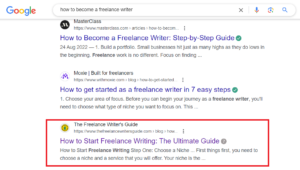
How to use topic clusters to dominate SERP?
Are you struggling to rank for your target keywords? Then, you might want to know what a Topic Cluster is and how to use it.
Topic Cluster is an SEO technique in which you structure your content around a broad term. It enables you to:
- Drive relevant traffic to your website, and
- Establish yourself as a niche expert.
In this article, we’ll discuss Topic Clusters and how you can use them to grow your website traffic.
So, without any further delay, let’s dive right in:
What is a Topic Cluster?
A Topic Cluster is a group of web pages themed around a specific topic or a broad keyword. At the center of it lies a pillar page surrounded by its cluster pages.
The pillar page covers a broad term, such as “Healthy Living,” while its cluster pages discuss its subtopics, such as “Organic Food,” “Sleep Cycle,” “Beginner Workouts,” etc. Each cluster page connects with the pillar and relevant cluster pages, creating a network of valuable content.
Why do Topic Clusters work?
Google uses the E-E-A-T framework to evaluate content quality. E-E-A-T stands for Experience, Expertise, Authoritativeness, and trustworthiness.
A themed and well-structured content cluster appeals to Google’s E-E-A-T framework. As a result, you attain higher SERP rankings for your target keywords.
How to use Topic Clusters to increase your website rankings?
Here is a step-by-step guide to gaining higher SERP rankings through topic clusters.
Keyword research and competitor analysis
Begin by identifying your target keyword. It could be a short or a long-tail keyword. For example, here’s one I am trying to rank for, “how to become a freelance writer?.”
On a quick Google search, I noticed a low-authority website (DA<25) ranking in the top 10 search results.
On visiting their website, I found a pillar page and a series of related cluster pages.
It gave me ample cluster content ideas to fuel my strategy.
You should follow the same process. The key is to analyze your direct competitors’ content strategies. Visit their pillar page (The one ranking for your target keyword) and inspect internal links to find cluster content ideas.
You can also use an SEO tool like SEMrush for competitor analysis. It allows ten free searches every day.
Paste your competitor’s pillar page URL into SEMrush’s console. Further, select the Pages option in the Organic Research menu to see their top-ranking pages. Visit each page and see if it fits your cluster content criteria.
However, with SEMrush’s free version, you only get information about the top 10 ranking pages. Yet, you can expand your research by analyzing your competitor’s sitemap.
Usually, you’ll find a link to a sitemap on your competitor’s website. If not, type the below-mentioned URL in the Google’s Search bar.
https://www.yourcompetitor’swebsite.com/sitemap.xml
It will lead to the website’s XML sitemap. Pay attention to the slugs in the URL tags (<URL>) to identify content cluster ideas.
Repeat this process with a couple of competitors. Further, use an Excel sheet to note relevant cluster page ideas and content gaps.
Write content
Once you have your pillar and cluster page content ideas, begin writing content. Make sure that your content appeals to Google’s E-E-A-T framework. Here are a few things that’ll help you achieve that.
● Add Value:
Don’t paraphrase something already present on the SERP. Instead, equip your content with unique value.
Send your content to your peers and industry experts and ask if they have a unique insight to add. Mentioning famous people and specialists can significantly improve your content credibility.
Further, share your personal experience with your audience. Talk about how you overcame a problem before you began solving it for others. People love first-hand experiences, and so does Google.
● Use data:
It’s easy to say something but hard to back it up. Hence, you must use data to back your claims. It brings depth and breadth to your content, making it more credible and engaging.
You can use an external report/data source or conduct a survey. Yet, make sure to cite external data sources if you use any. A reference to the information source assures data credibility.
● Fill cluster gaps:
Create content on the cluster ideas not covered by your competitors. This way, you can develop a more complete topic cluster and outrank your competitors.
● Use Visuals:
Adding images and videos to your content is more important than ever. The audience’s attention span is at a record low. In such a time, visuals can help you entertain your audience and engage them longer.
Consider using infographics to help your readers visualize core concepts. Further, use relevant stock images, videos, and even audio files. It helps break the text and brings variety to your content.
● SEO-optimize your content:
Just a heads up, don’t forget to SEO-optimize your content. Include keywords naturally and properly structure your content with H1, H2, and H3 tags. For reference, use this guide to optimize your blog posts for SEO.
Interlink
Interlinking is key to the success of the topic clusters. A quick rule of thumb is to link each cluster page to the pillar and other cluster pages when appropriate. Yet, make sure to keep it simple and don’t overdo it. The more natural your interlinking structure, the better.
Further, pay special attention to the anchor texts. Make sure it gives clear context to the page it is linking to.
Put conscious thought and consideration into structuring your topic cluster. This way, you can create a web of meaningful content, making it easy for users to navigate.
Update regularly:
While you may decide to enjoy your cluster-harnessed success, your competitors won’t. They are always looking to improve their content quality, and you should do the same.
Keep up with industry updates and advancements. Look out for ways and opportunities to improve upon your existing content. This way, you can stay ahead of the competition and sustain your success.
Conclusion:
Theming content around a broad topic can help you attain higher SERP rankings. It requires you to identify your content pillars and their cluster content ideas. You can do that by spying on your competitors and analyzing their strategies.
Once you decide on the seed and the cluster content ideas, create valuable content with unique insights and visual appeal. Further, cautiously interlink your pages to create a network of meaningful information. This way, you can make your content adhere to the E-E-A-T framework and dominate SERP.
Find a Home-Based Business to Start-Up >>> Hundreds of Business Listings.


















































